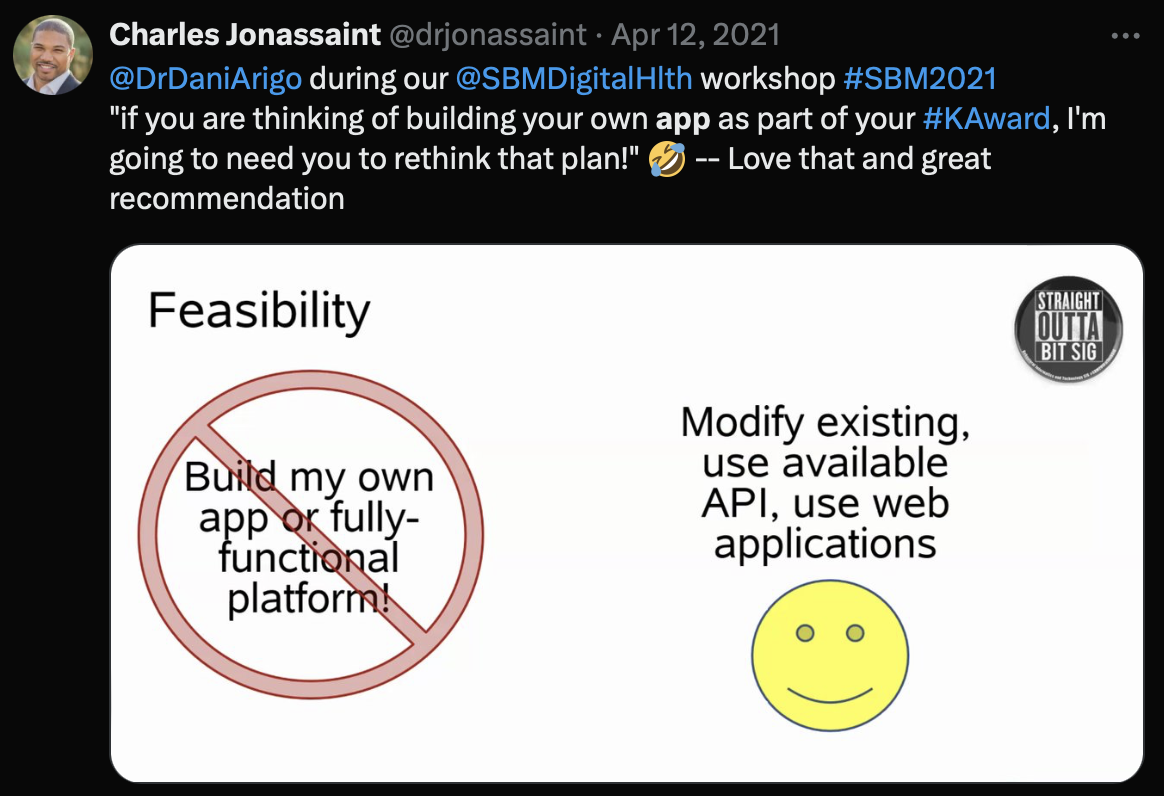Oh, the dreadful process of gathering quotes from health app developers—it’s enough to drive anyone up the wall. You end up with estimates ranging from a modest $30K to an eye-watering $300K and beyond. A 10x difference? That’s enough to make anyone’s head spin. So, how do you decide which path to take? The immediate temptation might be to opt for the cheaper option, but as any seasoned entrepreneur will tell you, choosing based solely on price is often a recipe for disaster.
The reality is all these quotes have their own merits and reflect different approaches, scopes, and end goals. Our mission here is to help you understand what drives these differences and equip you with the insights needed to make an informed decision. We’ll lay out a clear path for your health app, dissecting the costs and necessities of the first iteration of your app, and highlight strategic compromises that allow you to ship an effective, lean version of your app without breaking the bank.
Top Takeaways
- It’s Not About the Cheapest Quote: When choosing a quote, focus on the one that accommodates strategic compromises tailored to your health app, enabling you to see early results. Opting purely on price is rarely the best move.
- Effective Early-Stage Strategies: Some of the most efficient tactics for moving through the initial stages of health app development on a budget include:
- Avoid Storing PHI: Can you tackle HIPAA compliance later?
- Skip EHR Integration: Is this absolutely necessary?
- Platform Vigilance: Web or mobile: do you really need both?
- Leverage No-Code/Low-Code Solutions: Wouldn’t you like to ship faster?
- When High-End Quotes Make Sense: There are scenarios where those premium quotes are justified—particularly when compromises like avoiding HIPAA compliance or skipping EHR integration aren’t options. This often applies when marketing to large healthcare systems that demand specific integrations and compliance from the get-go.
Table of Contents
- Meet Dedica: An RPM Platform Worth Every Penny Invested
- Strategic Compromises to Consider
- Avoiding Common Pitfalls
- Recognizing the Value in Larger Budgets
- Cost-Effective Development Strategy
- The Reality of Healthcare App Development Costs
Meet Dedica: An RPM Platform Worth Every Penny Invested
Dedica Health is a remote patient monitoring (RPM) platform developed for The Heart Medical Group, a cardiology practice. The goal? Stick to Medicare RPM/CPT requirements, replace outdated tools like spreadsheets, and slash the volume of phone calls and manual tasks for providers and the back office.
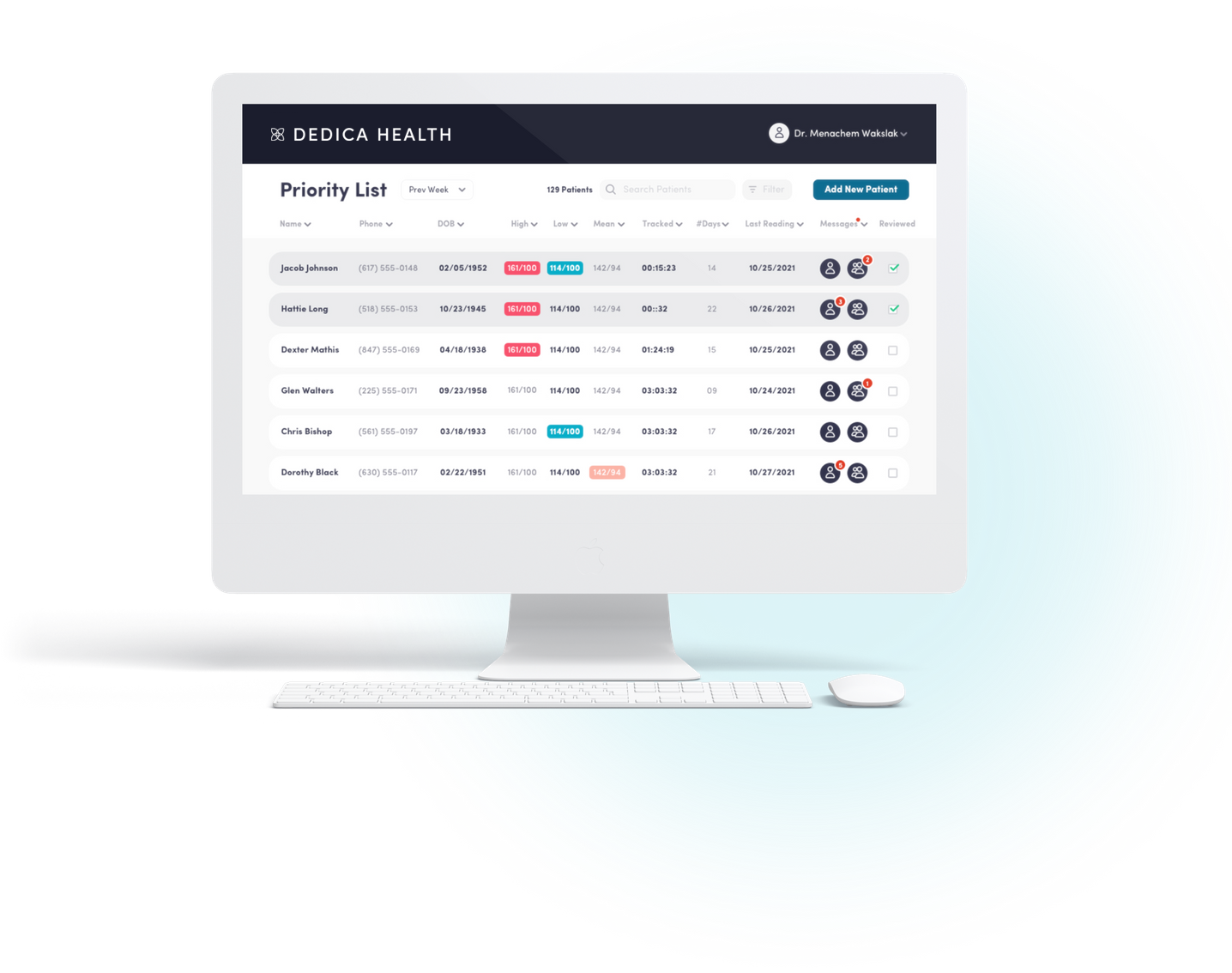
Development Costs vs. Actual Spending
When we started developing Dedica Health, the project could’ve easily spiraled out of control, cost-wise. A fully-fledged enterprise-grade product with all the trimmings might’ve run upwards of $500K. But here’s the kicker: by making strategic compromises and focusing on data-driven decisions, we achieved significant traction for a fraction of that budget.
We clocked in at 1,200 hours over 8.5 months, covering everything from prototyping and design to development, digital strategy, testing, and more. Let’s break it down:
- POC Development: Under 100 hours over just a couple of months. This phase was all about validating the core idea and ensuring it met essential requirements. In plain English, we built a visual prototype and measured how the target audience interacted with it.
Side Note: A Proof of Concept (POC) is the barebones version of your app. Sometimes, it’s just a graphical click-through demo, sometimes a simple ML algorithm processing incoming data, or maybe just a few screens with buttons—the bare minimum to test your idea with real users.
- MVP v1 Development: 600 hours over 5 months. By this stage, we were already getting real traction with the app.
Side Note: An MVP is the first version of your app that’s generating traction and you feel confident about starting to sell.
Now, The Heart Medical Group probably wouldn’t have taken the plunge if we’d slapped them with a $300K-$500K quote right off the bat. Instead, we listened to their goals for this digital healthcare product and started on a much leaner budget.

Cutting Corners Strategically
Dedica’s journey wasn’t without its strategic compromises—trade-offs that were crucial for shipping faster and still achieving traction:
- No Dedicated Mobile App: Instead of developing a complex mobile application, patients communicated with doctors via text messages. Providers or front desk staff sent messages via the web platform, and patients replied with simple texts.
- No Need to Sync with Medical Sensors: We eliminated the need for patients to set up and pair medical sensors with mobile apps. All data went straight to a cloud platform for analysis by the practice’s staff and doctors.
- Essential Features First: We postponed less critical features and focused on integrating clinically certified sensors, automating back-office routines, and ensuring HIPAA compliance only where absolutely necessary initially (certainly not during the POC stage).
The Result
The result was a highly effective and lean remote patient monitoring system. Here are some of the key metrics and achievements:
- Patient Monitoring: Over 1,100 patients are monitored daily.
- Revenue Generation: Secured a $300,000 ARR deal by adding a SaaS subscription model to their platform within a few months after launching the MVP.
- Compliance Success: More than 80% of patients reached CPT code targets, aligning with Medicare RPM guidelines.
You’re starting to get the picture, right? Below, you’ll find the best practices and insights that went into achieving these results. And yes, you’ll also discover why those eye-watering $500K quotes have their place in the landscape, too.
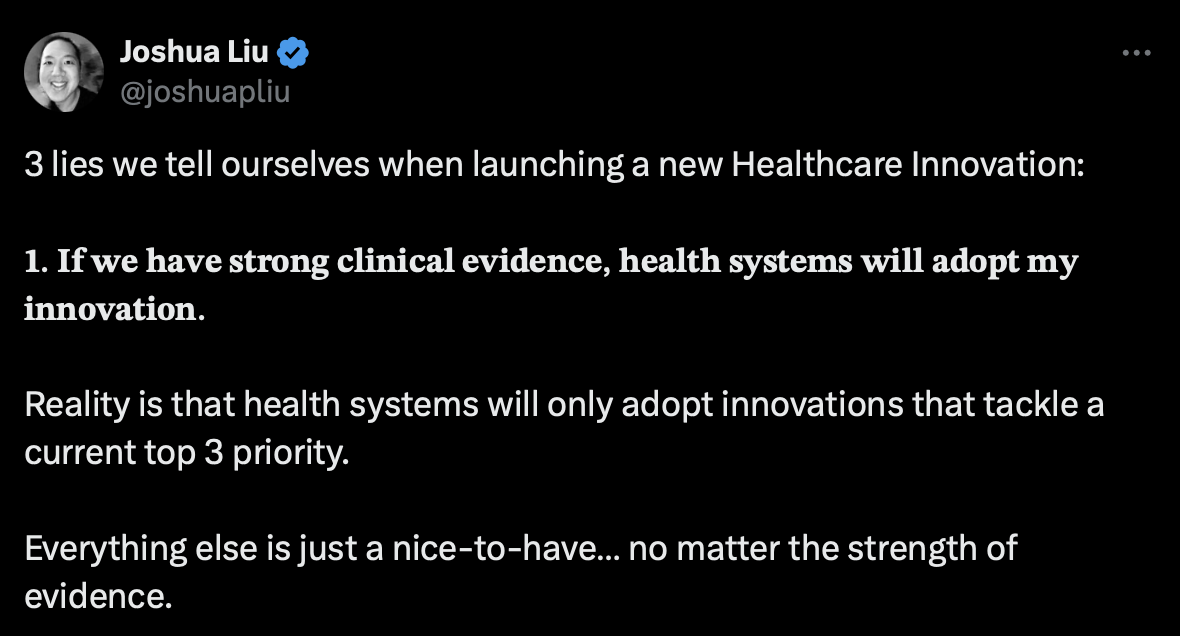
Strategic Compromises to Consider
Alright, let’s get down to the brass tacks—how can you ship faster and still get traction without mortgaging your future? When you’re staring at those jaw-dropping quotes, it’s clear you need to make some trade-offs. Here are some strategic compromises that can help you move forward efficiently with your healthcare app.
Avoiding PHI Storage to Bypass Initial HIPAA Compliance
HIPAA compliance is a big deal, no question about it. But it’s also a colossal expense, especially when setting up and ensuring the compliance of your development and testing environment. One savvy move? Avoid storing protected health information (PHI) initially.
- Use de-identified or synthetic data if possible
- Don’t store PHI
By sidestepping PHI storage in v1 of your app, you can bypass the initial compliance hurdles. Instead, focus on non-sensitive data and user behavior analytics. You can always integrate robust HIPAA-compliant solutions once you’ve validated your concept.
Deferring EHR Integration
EHR integration is another costly and complex feature. For your initial launch, consider deferring this integration. It’s tempting to want your app to sync perfectly with existing medical records from day one, but the reality is it’s often better to integrate later.
Leveraging No-Code/Low-Code Solutions
Here’s a hot tip: leverage no-code or low-code solutions for building your proof of concept or MVP. Platforms like Bubble can drastically cut down both development time and costs. These tools allow you to quickly iterate and test your ideas without needing a full-fledged development team.
- most no-core features like notifications, registration, etc., already exist — plug them in
- it’s still best if developers handle the no-code/low-code scenario for you
No-code/low-code solutions enable you to put a working model in front of real users, gather feedback, and refine your product before investing heavily in custom development.

Not Going Mobile Immediately
Ask yourself this: does your target audience absolutely need a mobile app right out of the gate? Sometimes, a web application can be sufficient for your initial version. If mobile is critical, consider starting with a simpler version using wrappers like Cordova instead of diving into costly native development.
Starting with a web app or a hybrid solution allows you to test your core functionalities across platforms without the hefty price tag of native development for both iOS and Android. Plus, you can gather valuable user insights to guide future iterations.
Smart Start Strategies
Strategic compromises don’t mean sacrificing quality—they’re about smart decision-making. You can architect your healthcare app with future requirements like HIPAA compliance, FHIR storage, and mobile expansion in mind to accommodate future EHR integrations, security, and scalability.
The key is to pinpoint the right moments in your product lifecycle to introduce these complexities, ensuring they make financial sense without overwhelming your budget upfront. By avoiding unnecessary complexities, deferring costly integrations, and leveraging flexible development tools, you can ship faster, gain traction, and position your app for sustainable growth—all while keeping your budget intact.
Avoiding Common Pitfalls
Here are the key missteps you need to dodge to keep your healthcare app development project on track and your wallet intact. Let’s walk through this minefield together.
Overengineering: Why Bells and Whistles Can Wait
- Focus on Core Features: Solve a clear, pressing problem first.
- Skip the Extras: Fancy features can come later once you’ve validated the core functionality.
- Keep It Simple: A leaner app gets to market faster and with fewer headaches.
Providers appreciate something that gets them through the day and can definitely live without the fancy stuff in early versions. Trust us, we learned that the hard way.
Misunderstanding Compliance Needs
- Future-Proof Your Architecture: Design with HIPAA compliance in mind, but don’t implement until necessary.
- Plan for Growth: Ensure your app can adapt to future regulatory requirements.
This typically means using scalable technologies that adhere to HIPAA requirements.
Not Leaving Room for Future Tech Upgrades
- Flexible Architecture: Build your app so it can evolve with tech advancements.
- Plan for Scalability: Make sure you can easily integrate future features like FHIR data storage or Mirth Connect integrations.
Ignoring Agile Development Principles
- Iterate Quickly: Develop in sprints, test, and gather feedback.
- Be Adaptable: Adjust based on user feedback and market demands.
Releasing on iOS and Android Simultaneously
- Know Your Audience: Focus on one platform first, usually where your primary users are.
- Cross-Platform: Set up the cross-platform foundation so you can easily expand to another platform later on.
By steering clear of these common pitfalls, you’re setting up your healthcare app for success without wasting time or resources.
Recognizing the Value in Larger Budgets
Let’s face it—sometimes, those eye-popping quotes in the six-figure range aren’t just hot air. In certain scenarios, a $100K to $200K budget for a proof of concept or MVP can make perfect sense. Take AI healthcare apps, for example. If your go-to-market strategy involves selling to a large hospital system, cutting corners on EHR integration or HIPAA compliance isn’t an option. You need robust features from day one.
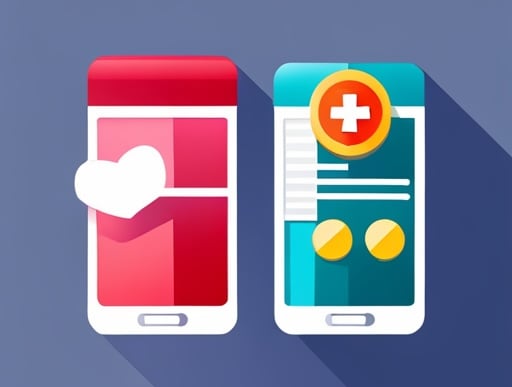
When $100K to $200K Prototypes Make Sense
- Complex Integrations: If your app needs to integrate seamlessly with existing EHR systems right out of the gate, expect to invest more upfront. These integrations are complex and time-consuming but are essential for gaining traction in hospital systems.
- Compliance Requirements: Skirting around HIPAA compliance by avoiding PHI storage might work for some apps but not for all. If your app’s core functionality revolves around handling sensitive patient data, you must budget for full compliance from the start.
- Advanced Features: Developing advanced AI algorithms or machine learning capabilities isn’t cheap. These technologies require significant investment in both development and testing to ensure they work correctly and safely in a healthcare setting.
A decent example from our portfolio is Allheartz—an AI health app that turns a mobile phone into a smart sensor for physiotherapists to run remote tests:
- Had to use mobile from day one because of the nature of the product (to unlock the power of computer vision for physicians at a distance).
- Had to be HIPAA compliant from the start because of storing PHI.
- Fortunately, working around EHR integration was an option in the beginning.
The Realities of $500K+ Budgets
Now, what about those projects that hit the $500K mark and beyond? Believe it or not, we’ve worked on quite a few enterprise-grade products (e.g., with Medable) that required this level of effort—and these budgets build up over time, gradually. You’ll find that the journey from $200K to $500K often involves several iterations and prototypes.
- Gradual Build-Up: Real traction often comes later, after you’ve implemented, tested, and verified all main integrations. The budget doesn’t explode all at once; rather, it accumulates as you refine and expand your product.
- Full-Featured Solutions: By the time you’re looking at a $500K budget, you’re not just creating an app; you’re developing a comprehensive solution. This includes integrations, extensive testing, user feedback integration, and rolling out sophisticated features that set your app apart.
- Scalability and Stability: High-budget projects also focus heavily on scalability and stability. If you’re aiming for widespread adoption within large hospital systems or across multiple healthcare providers, these elements are non-negotiable.
Well, and there’s that, of course: when building a healthcare app can feel like developing a one-way trip to a black hole.
It’s crucial to recognize when a lean approach works and when it’s time to open the wallet. If your app’s success hinges on sophisticated features and seamless integration into existing healthcare infrastructures, then investing more upfront is a strategic necessity.
Cost-Effective Development Strategy
Alright, let’s cut to the chase. Building a healthcare app without draining your bank account is entirely feasible, but it requires a disciplined, data-driven approach. Think of it as a game of chess—you need to make every move count. Here’s how you can develop your app smartly and leanly:
Data-Driven Approach
- Prioritize Functionality: Focus on features that promise higher traction. Start by identifying the core user pain points and create solutions around them.
- Measure Everything: Use key performance indicators (KPIs) and metrics that matter to your target audience. Metrics like user engagement, retention rates, and conversion rates are your best friends here.
- Validate with Data: Every bell and whistle you consider adding should be backed by solid data. If the numbers don’t support it, ditch it.
Agile Development Principles
- Quick Experiments in Code: Before you write a single line of code, validate your ideas with quick experiments. This helps avoid wasting time and resources on features that might not resonate with users.
- Prototyping First: Create visual prototypes and test them with real users. Tools like Figma can help you get user feedback without requiring a heavy investment.
- Iterate Relentlessly: Develop in sprints, gather feedback, and adjust. It’s all about quick iterations. Build, test, learn, and repeat.
User Testing and Feedback
- Early and Often: Don’t wait until your app is perfect to get user feedback. Start showing it to users as early as possible. Their insights are invaluable.
- Usability Testing: Conduct usability tests to see how intuitive your app is. Watch how users interact with it and note where they stumble.
- A/B Testing: Experiment with different versions of features to see which one performs better. Make decisions based on evidence, not hunches.
Measure, Adjust, Repeat
- Track Progress: Use analytics tools to monitor how users are interacting with your app. Tools like Google Analytics, Mixpanel, or Amplitude can provide deep insights.
- Pivot When Necessary: If something isn’t working, don’t be afraid to pivot. Agility is key. The faster you can adapt, the better.
- Iterate Based on Data: Let your metrics guide the development process. Continuously improve the app based on user feedback and data insights.
By adhering to these strategies, you can ensure that every dollar spent is driving you closer to a product that not only attracts users but also retains them. Remember, in the world of healthcare app development, slow and steady doesn’t win the race—smart and strategic does.
The Reality of Healthcare App Development Costs
There’s no sugar-coating it: navigating the landscape of healthcare app development quotes can be nerve-racking. Hopefully, now you realize that there’s no one-size-fits-all solution, and every quote you receive, whether it’s $30K or $300K, has its own merits and place in the ecosystem. And next time you get a free quote, you won’t need an expensive therapy session 😉
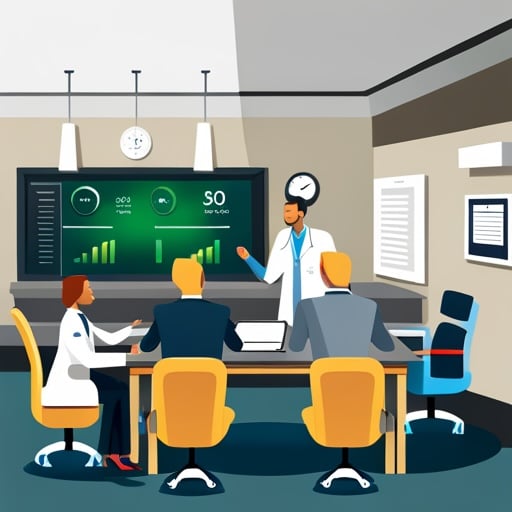
The key is understanding what stage your app is at and what it truly needs to get to the next level. What are the trade-offs you can swallow that still result in a net positive, like faster time to market or early traction generation?
By focusing on essential features, avoiding unnecessary complexities, and planning for future integrations, you can choose the option that best suits your needs. Ready to take the next step in your app development journey? Reach out to our team for expert guidance and support tailored to your unique project requirements. Let’s bring your vision to life efficiently and effectively.
A POC in healthcare app development demonstrates the feasibility of an idea by building a simple version that highlights core functionalities. It focuses on proving that the concept can work without investing in a full-fledged product. An MVP is a step beyond a POC, offering a functional app with essential features that solve a key user problem. It allows for user feedback and market validation, whereas a POC is more about testing technical feasibility. Quotes vary widely due to differences in project scope, required features, compliance needs, and development stages. A proof may cost less than an enterprise-grade product because it includes fewer features and integrations. In addition, every company providing a quote makes its own assumptions about whether you will need HIPAA, EHR integration, etc., from day one. To reduce costs, focus on essential features, avoid storing Protected Health Information (PHI) to bypass HIPAA compliance initially, and skip complex integrations like Electronic Health Records (EHR). Use no-code tools for quick prototyping. Advanced features like EHR integration should be added once your POC has proven its value and you’re preparing for a more comprehensive MVP or enterprise-grade product. This phased approach helps manage costs and complexity effectively.Frequently Asked Questions
What is a Proof of Concept (POC) in healthcare app development?
How does a Minimum Viable Product (MVP) differ from a POC?
Why are there significant differences in quotes for healthcare apps?
How can you reduce costs at the POC stage?
When should you consider adding advanced features like EHR integration?
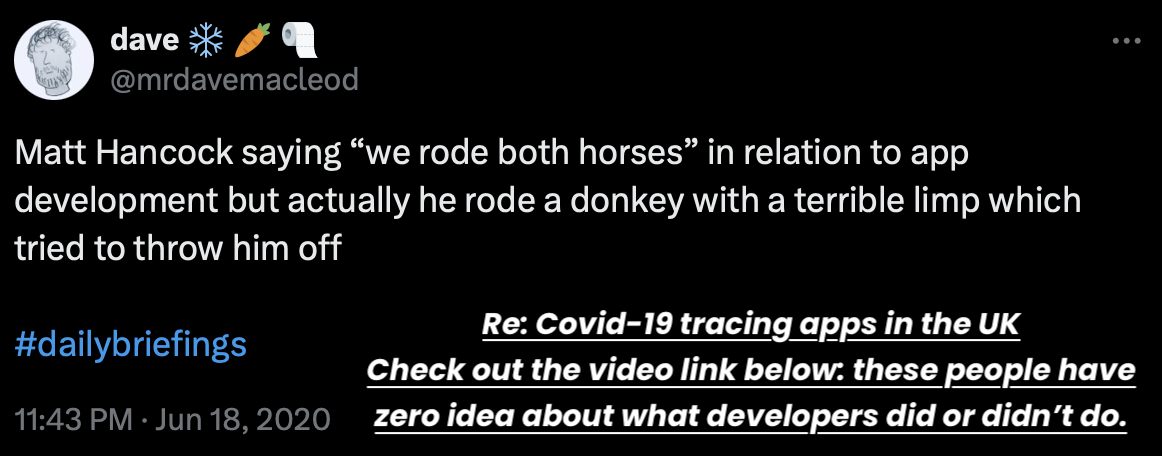 https://youtu.be/thi28BXTqAU
https://youtu.be/thi28BXTqAU